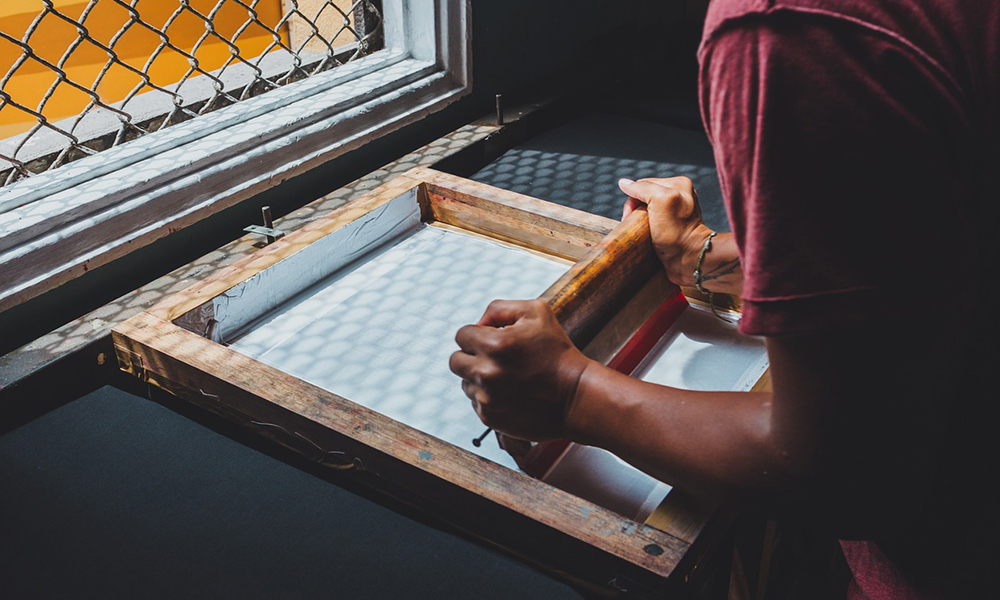
A special form of printing that almost all of us have heard of is primarily intended for printing on textiles, although screen printing is applied on other materials. It is known that screen printing, except for printing on textiles, is used for decoration of metal objects and objects whose shape is not ordinary, and in the marketing sphere, screen printing is used for printing promotional materials (pens, lighters, stickers, foils, etc.) or on already finished products of different purpose.
The other name for screen printing is perforation printing, and the basic process involves printing with a specific screen.
Namely, first the printing base is made in the form of a special frame most commonly made of wood or aluminum, and its dimensions are adapted to the material to be printed. Then, on the prepared frame, the fabric is thickened, which is mostly made of polyester, and then the screen is covered with a special emulsion. When the emulsion is dried, it closes the pores on the screen. Then, the preparation of the motif to be printed is approached on a special film or tracing paper, which is leaned on the prepared screen, thus exposed to drying, and most often the drying process is carried out by UV rays. When it is completely dried, the screen is washed out of the applied emulsion, after which there remain open holes in it at the places the light has not reached, which is actually the print. The screen is then placed on the screen printing machine and the process itself begins.
In addition, a special knife is used for screen printing, by whose application over the screen the color goes through the holes in the screen thus leaving a print on a specific material. It is well known that machines using this type of printing are not particularly expensive when compared to the prices of other printing machines, and besides that, most of the screen printing machines have an extremely high degree of automation. In addition, screen printing is very popular because one of its basic characteristics is the application of an extremely thick layer of color, which is not the case in other printing techniques. Additionally, screen printing is especially suitable for larger quantities because only then can you see how much this kind of printing is actually cost-effective, and some of the basic features of screen printing are pretty fast production, but also cheap preparation of the printing form, provided that the cost-effectiveness of screen printing is especially visible when it comes to larger quantities of materials that need to be printed.
Different types of colors are used for screen printing, and some of them are: plastisol (it has extremely good transparency, and is especially used for printing clothes, when the substrate is dark) , PVC without phtalates (one of the newer types of colors used for screen printing, and unlike plastisol has no toxic component and achieves an extremely soft sense of printing), water-based inks (ideal for light-based printing, when it is necessary that the print is dark, and best for larger areas to be printed), glitter (colors used to achieve metallic effect, most often they can be found in silver and gold variants, although it is also possible to achieve the so-called glitter effect with a special technique of mixing metallic flakes in a certain color), flock (a special technique of preparation in screen printing, which implies first setting of adhesive on a particular fabric, over which flock or glossy foil is put), caviar balls (another extremely interesting technique within screen printing, which implies that adhesive is first printed in a particular shape, and then special balls that resemble caviar are applied to it, hence the name), the color expander (they are most often added to the basic plastisol colors in order to achieve or increase the already existing 3D effect), lacquers (a transparent base that is applied over almost any color to achieve the effect of additional gloss), four-color printing known as CMYK (using this technique, printing preparation is done with a combination of four different colors.)
In accordance with the needs of clients, each pressman will tell you what the best solution to prepare your design is so you can take full advantage of the screen printing in both quality and financial terms.